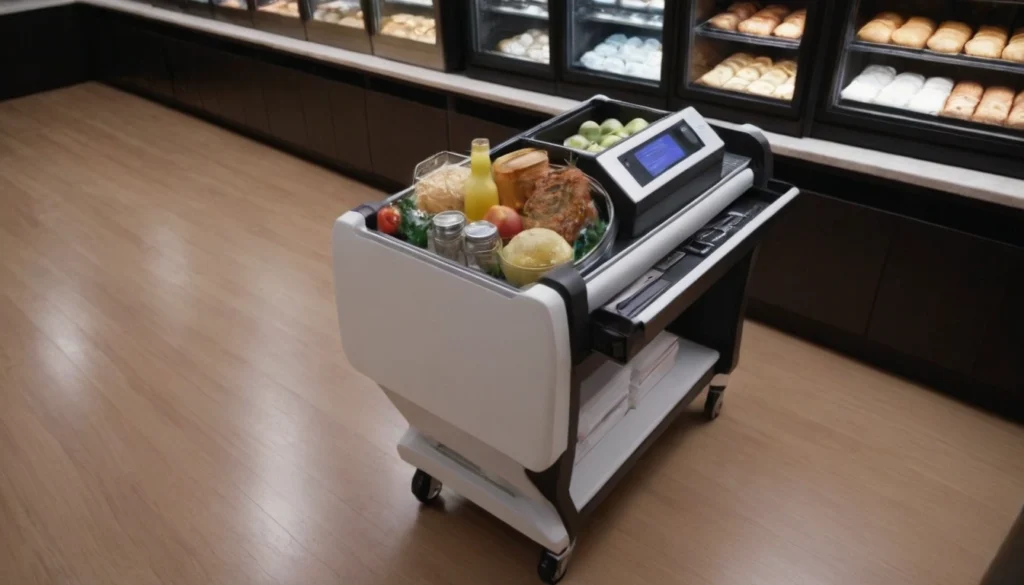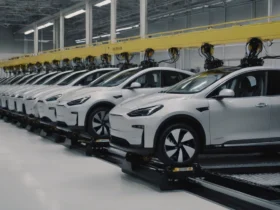Discover how AI is transforming retail experiences and what it could mean for your future grocery runs

In an era dominated by rapid technological advancements, the retail industry stands as a prime example of significant transformation. The move towards automation, particularly in shopping experiences, has taken leaps from concept to reality, bringing about changes that were once confined to science fiction. One of the most intriguing implementations of this technology is found in the “Just Walk Out” shopping model, which Amazon introduced with much fanfare.
The Genesis of Automated Shopping: A Brief Overview
Automated shopping technologies are designed to streamline the consumer experience, reduce wait times, and enhance operational efficiency. Initially popularized by Amazon’s “Just Walk Out” technology, these systems allow shoppers to pick up items and leave the store without the traditional checkout process. This technology is built on a foundation of sophisticated AI-driven processes that include computer vision, sensor fusion, and deep learning algorithms.
How Does “Just Walk Out” Technology Work?
At its core, the “Just Walk Out” technology enables a seamless shopping experience. Shoppers enter the store, pick the items they want, and simply leave with them. The system automatically detects what products are taken off the shelves and adds them to the customer’s virtual cart. Conversely, items returned to the shelves are removed from the cart.
The technology relies heavily on a network of cameras and sensors throughout the store, which continuously track the items’ movement. Moreover, advanced algorithms are crucial in accurately identifying the products and associating them with the right customer, ensuring a smooth transaction without human intervention.
The Role of Human Oversight in AI Systems
Despite the high level of automation, human intervention plays a crucial role in the reliability and accuracy of these systems. For instance, during the initial rollout of Amazon’s technology, a significant number of transactions required manual review. This was primarily due to the AI’s inability at times to determine with complete certainty what specific items a customer had picked up, especially if the items were small or obscured.
Interestingly, about 700 out of every 1,000 transactions necessitated a review by human operators based in India. These workers helped to confirm the choices AI predicted, providing an essential feedback loop that helped improve the accuracy of the algorithms over time. This human-in-the-loop approach highlights a critical aspect of digitalisation in retail: the technology is not just about replacing human roles but enhancing them.
The Evolution: From Just Walk Out to Smart Shopping Carts
As the technology evolved, Amazon adapted its approach by introducing “Dash Carts” — smart shopping carts equipped with a combination of computer vision and weight sensors to track what consumers add to (or remove from) their carts. This shift was driven by consumer feedback that favored features such as real-time access to pricing, promotions, and navigational aids within stores.
The Implications of AI in Retail
The implications of such technologies extend far beyond just convenience. They represent a shift towards more data-driven retail environments where inventory accuracy, consumer behavior analytics, and personalized shopping experiences become the norm. This shift not only enhances customer satisfaction but also provides retailers with invaluable insights that can drive further improvements in service and efficiency.
In this context, systems like PaperOffice, an AI-based document management system (DMS), prove their worth by handling vast amounts of data generated from these interactions. They efficiently process, analyze, and secure transaction records, ensuring compliance and facilitating better decision-making based on real-time data insights.
The Future of Shopping: What Lies Ahead?

As we look to the future, the potential expansions of AI-driven systems in retail are boundless. From entirely automated stores in urban centers to integration with online shopping platforms, the lines between digital and physical shopping experiences continue to blur. This not only sets the stage for more personalized shopping journeys but also promises greater operational efficiencies for retailers worldwide.
Conclusion: Embracing the New Retail Reality
The journey from traditional shopping methods to AI-driven systems like “Just Walk Out” technology and smart carts is just beginning. As we advance, the collaboration between AI and human insight will continue to be pivotal in refining these technologies, ensuring they meet the needs of both consumers and businesses alike.
The integration of AI into retail is not just about enhancing the shopping experience — it’s about setting a new standard for the industry. By understanding and adapting to these changes, retailers can ensure they are not left behind in the fast-evolving commercial landscape.
This exploration of AI’s impact on retail not only provides a glimpse into a future where shopping is more interactive, efficient, and personalized but also underscores the transformative power of digital technologies in reshaping everyday experiences.





Leave a Review